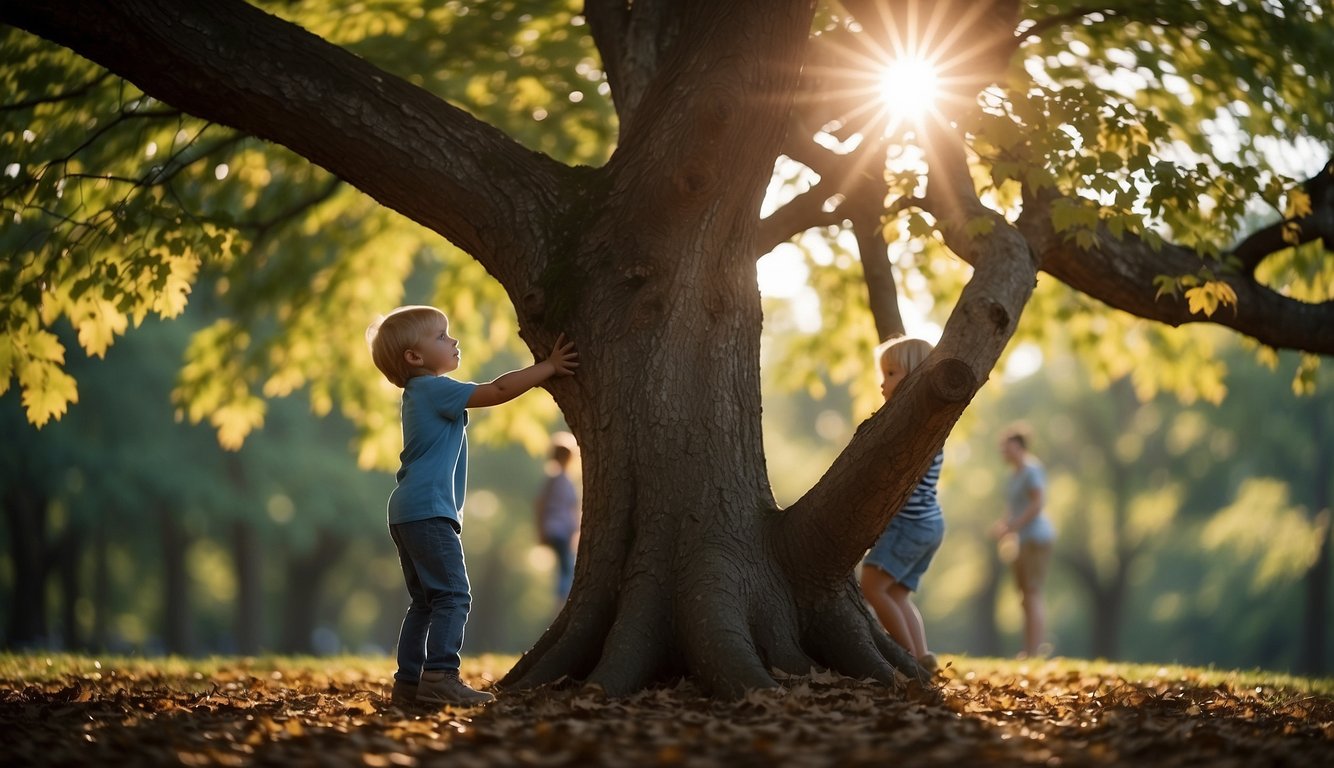Choosing the right tree for climbing can enhance your outdoor experience.
You’ll need a tree with strong, sturdy branches that are capable of supporting your weight. They should also be spaced well enough to facilitate easy movement.
3 Trees that are Great for Climbing
Oak
Oak trees are renowned for their strength and sprawling branches.
Their slow growth results in robust limbs ideal for climbing.
When selecting an oak for climbing, ensure its branches are solid and well-distributed to support your climb.
Maple
Maple trees, with their wide canopies and sturdy structure, offer an inviting climb.
Look for Sugar Maples as their strong, lateral branches are especially suitable for climbing.
Ensure no branches are damaged or diseased before you climb.
Pine
Pine trees are abundant and can be good for climbing, but it’s crucial to choose mature ones with thick bark for better grip.
Avoid pines with resinous, sticky sap which can make climbing more difficult.
Ensure the branches are healthy and secure to endure the climb.
Choosing the Right Tree Species
Identifying the ideal tree species is crucial for a safe and enjoyable climbing experience.
You’ll want to consider the strength of the branches, ease of access, and the tree’s growth characteristics.
Strength and Branch Structure
Oak trees are renowned for their robust branches, making them excellent choices for climbing.
You need sturdy, well-spaced branches that can support your weight.
Look for trees with thick, strong limbs that are alive and free of disease.
Tree Height and Accessibility
While maple trees, such as the silver maple and sugar maple, are not the tallest, they offer a good balance of height and climbing accessibility.
The tree should be tall enough to provide a challenge, but not so tall as to be unsafe.
Avoid trees near power lines or other hazards.
Growth Rate and Longevity
Trees with faster growth rates, like the silver maple, tend to have weaker wood.
Conversely, species with slower growth rates, such as oaks, often have denser, stronger wood and a higher longevity, which is better for climbing.
Select trees that have stood the test of time and appear healthy and vigorous.
Environmental Impact and Conservation

When you’re climbing trees, it’s essential to consider the environmental impact and conservation efforts to ensure sustainable tree health and accessibility for future climbing enthusiasts.
Impact on Tree Life
Tree climbing can inadvertently harm trees.
Pressure from climbers can damage the bark, which serves as a protective layer against diseases and pests.
Frequent climbing can also weaken branches, leading to potential breakage and unhealthy tree growth.
- Physical Damage:
- Scratches or gashes in the bark
- Broken limbs and stripped leaves
- Stress Factors:
- Compacted soil inhibiting root growth
- Disruption of nutrient flow within the tree
Climbing Best Practices
To minimize your impact, adhere to best practices that prioritize the tree’s well-being.
- Tree Selection: Choose healthy, mature trees with sturdy branches.
- Climbing Gear: Use proper gear to avoid unnecessary stress on tree limbs.
- Avoid Overuse: Rotate your climbing spots to prevent overburdening a single tree.
Legal Restrictions
Be aware of local regulations surrounding tree climbing as activities may be restricted to protect the environment or for safety reasons.
- Protected Areas:
- Climbing may be prohibited in conservation zones.
- Species Preservation:
- Rare or endangered trees might be off-limits.





Leave a Comment